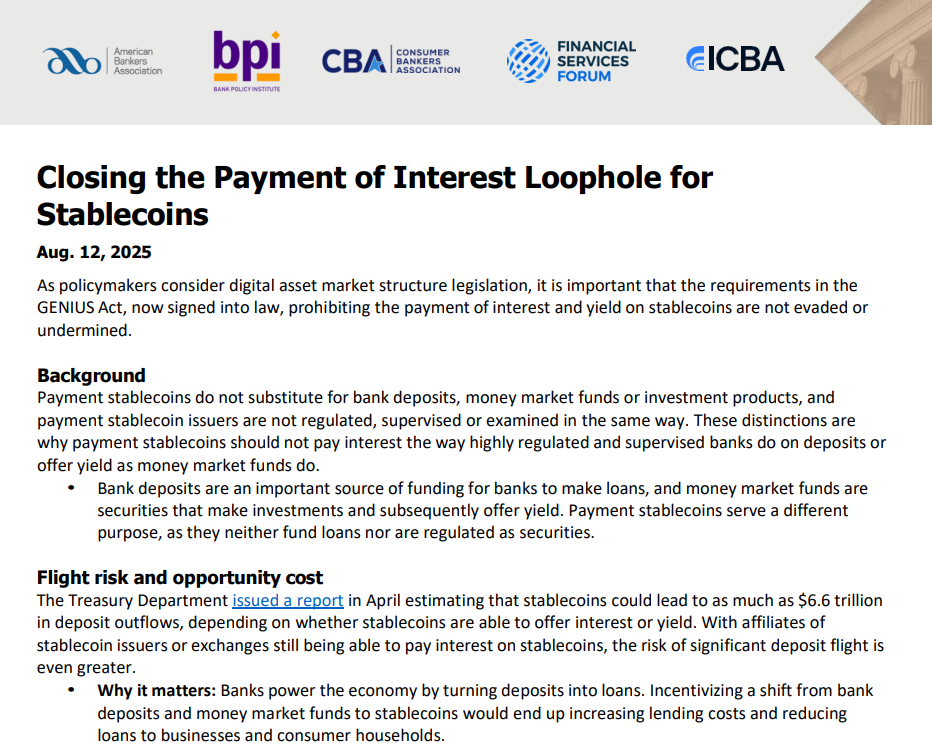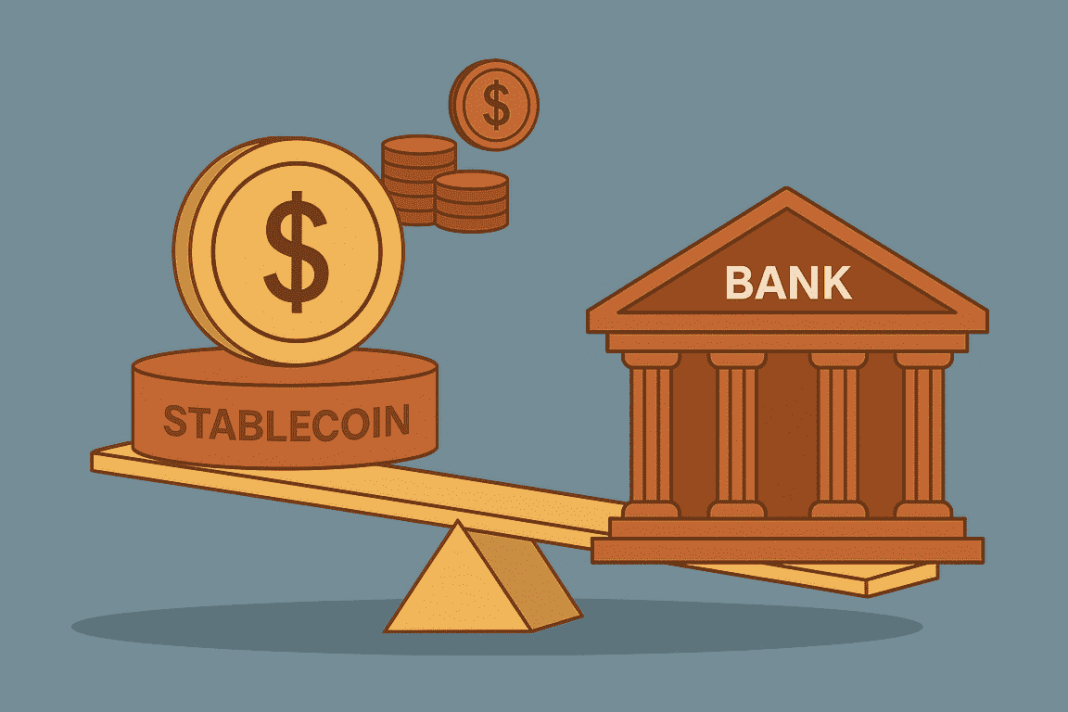US bank groups, led by the Bank Policy Institute (BPI), have urged Congress to close what they call a stablecoin yield loophole in the GENIUS Act.

In a letter sent on Tuesday, the BPI said the act bans stablecoin issuers from directly offering interest or yield but does not extend this ban to affiliates or crypto exchanges.
This leaves room for stablecoin issuers to bypass the restriction by partnering with such entities to pay returns.
The BPI warned that, without changes, the loophole could cause $6.6 trillion in deposit outflows from the banking sector.
This shift, they said, would reduce funds available for loans to US businesses and households.
Stay ahead in the crypto world – follow us on X for the latest updates, insights, and trends!🚀
GENIUS Act Provisions Leave Room for Affiliates to Offer Yields
The GENIUS Act, signed by President Donald Trump on July 18, was designed to regulate payment stablecoins, including Tether and USDC. It prohibits stablecoin issuers from paying interest to holders but does not mention affiliated companies or partner platforms.
This allows exchanges such as Coinbase or Kraken to give rewards to USDC holders while staying within the law. Some stablecoin issuers use this indirect method to maintain yield offerings, which US bank groups say creates an uneven playing field with regulated banks.
According to the BPI, this gap in coverage enables stablecoin issuers to compete with banks for deposits without facing the same lending and liquidity rules.
Bank Associations Cite Potential $6.6 Trillion Deposit Outflows
The BPI letter was co-signed by the American Bankers Association, Consumer Bankers Association, Independent Community Bankers of America, and the Financial Services Forum.
It stated that stablecoins are different from bank deposits and money market funds because they do not fund loans or invest in securities to provide returns.
“Payment stablecoins should not pay interest the way highly regulated and supervised banks do on deposits or offer yield as money market funds do,”
the letter said.
The BPI cited an April US Treasury report that warned yield-bearing stablecoins could cause $6.6 trillion in deposit outflows, increasing the risk of deposit flight during financial stress.
This could limit credit supply and raise borrowing costs for businesses and households.
Stablecoin Market Still Small but Growing
The stablecoin market is valued at $280.2 billion, far smaller than the $22 trillion US money supply recorded by the Federal Reserve in June.
According to CoinGecko data, Tether (USDT) holds about $165 billion in market value, while USD Coin (USDC) has about $66.4 billion. Together, they make up more than 80% of the total stablecoin market.
The US Treasury projects the stablecoin market could reach $2 trillion by 2028. Officials have said the GENIUS Act could boost the global role of dollar-backed stablecoins, reinforcing the US dollar’s position in global finance.
Disclosure:This article does not contain investment advice or recommendations. Every investment and trading move involves risk, and readers should conduct their own research when making a decision.
Kriptoworld.com accepts no liability for any errors in the articles or for any financial loss resulting from incorrect information.

Tatevik Avetisyan is an editor at Kriptoworld who covers emerging crypto trends, blockchain innovation, and altcoin developments. She is passionate about breaking down complex stories for a global audience and making digital finance more accessible.
📅 Published: August 13, 2025 • 🕓 Last updated: August 13, 2025


